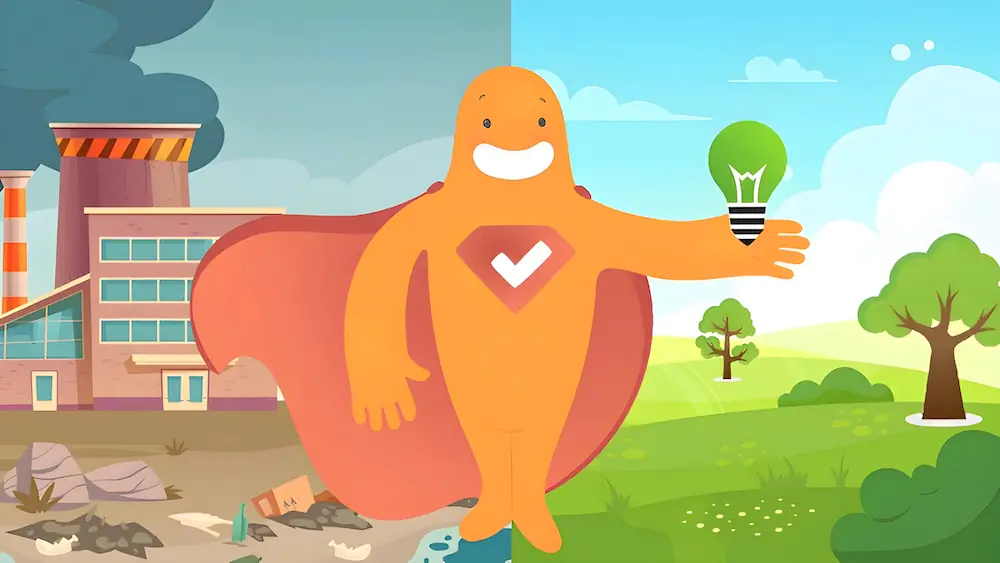Need to survey a large segment of the population but short on time and money? Enter cluster sampling, the time- and cost-effective way to gather data across a geographical spread. In this blog, we’ll explain how cluster sampling works, its various methods, benefits of the technique, and more.
Create your FREE survey, form, or poll now!
What is Cluster Sampling in Statistics?
Cluster sampling is a technique often employed when a researcher isn’t able to gather data from an entire population or geographic area. Why? Surveying a large area can be expensive and time-consuming; it also makes analysis much more complicated. With this approach, you’ll be dividing large areas into smaller clusters. Consider a researcher who wants to understand online shopping behaviors of all adults over 18 in the United States. Surveying the whole population would be an enormous task. So, instead of doing that, each state would be separated to form a different cluster. Then, people are selected randomly among the clusters to form a sample.
Types of Cluster Sampling
This method of research can be broken down into three types: single-stage, two-stage, and multistage. They’re based on how many steps it takes to narrow the sample down to a manageable level. Often, this is based on the need for accuracy as well as time and budget constraints.
Single-stage Cluster Sampling
Using this technique, sampling is conducted only one time. For example, say a researcher wants to understand the average grade point average of high school students within a particular state. Of course, it would be difficult to survey every high school student within the state. So, the researcher randomly selects cities within the state (clusters) to form a sample and surveys within the clusters.
Two-stage Cluster Sampling (or Double-stage sampling)
In this method, the researcher takes the single-stage method a step further to reduce the amount of sampling needed. Using the same example as before, rather than survey every student within each cluster, the researcher surveys only a handful of students from each cluster by implementing simple random sampling or systematic sampling.
Multiple Stage Cluster Sampling
When time and budget are extremely tight, the researcher can continue to break up the cluster, taking progressively smaller and smaller random samples. Because this method may not be as accurate, it is usually employed when time and budget are extremely tight. So now, the research may break the city clusters into school clusters, and randomly sample students from each school. Random sampling ensures everyone has the same probability of selection. More on this in a moment.
How To Conduct Cluster Sampling
What’s the best way to start regardless of the technique you choose? Follow these four steps.
1. Define Your Population
To begin, it’s important to clearly define the population that needs to be studied or surveyed.
Example: All high school students within Florida.
2. Divide Your Population Into Clusters
Now, you need to break your population into clusters. The quality of these clusters and how well they represent the greater population will determine the accuracy of your study or survey. Somethings to keep in mind:
- Each cluster’s population needs to be diverse, representing every possible characteristic of the identified population as a whole.
- Each cluster should have a similar distribution of characters as the distribution of the greater population.
- Clusters should not overlap, i.e. the same students should not appear in more than one cluster.
In a nutshell: Each cluster should be a mini-representation of the entire population.
Example: You cluster high school students by school. Covering the whole population requires including every school in the city. Since students only attend one school, there will not be overlap.
3. Randomly Select Clusters for Your Sample
Confident that each cluster is a smaller representation of the entire population? Then begin randomly selecting from the cluster to support the validity of your results. This will give you a diverse selection of students, e.g., you won’t wind up surveying a majority of students from Advanced Placement classes but rather all classes.
Example: You assign a number to each school and use random number generation to select a random sample of students.
Learn more about how to determine the appropriate sample size of your cluster in our blog, How To Determine Sample Size for Your Survey. We cover confidence intervals, confidence levels, and standard deviations.
4. Determine Type of Cluster Sampling
If you’re using single-stage cluster sampling, you’re ready to begin collecting data. If you’re using the two-stage or multiple-stage approach, it’s time to break your cluster down into a more manageable group, as described in the previous section. Then, you can begin collecting data.
Benefits of Cluster Sampling
We’ve covered some of the advantages and disadvantages, but to recap, cluster sampling is:
- Less expensive. Because you’re surveying a sample of a population and not the entire population, cost can be greatly reduced.
- Less time-consuming. Surveying smaller samples takes less time than surveying an entire identified population.
- Easier to analyze. Rather than comb through potentially hundreds of thousands of responses, this technique allows you to narrow responses down to the thousands or even hundreds (depending on sample size).
- Highly valid (generally). Because cluster sampling uses randomization, if the population is clustered properly, your sample will reflect the characteristics of the larger population which means high validity. Of course, as you go farther down the multistage rabbit hole reducing cluster sizes, it’s likely to have a negative impact on validity.
What is the Difference Between Cluster Sampling and Stratified Sampling?
These two methods share some similarities (like the cluster technique, the stratified sampling “strata”, or sampling unit, is also random and distinctive with no overlap). However, stratified sampling segregates its strata into groups based on gender, age, religion, nationality, socioeconomic backgrounds, and so on. This adds complexity to the study or survey, but also ensures greater representation of the entire population.
Conclusion
Cluster sampling is a great way for researchers to study an entire population – without having to survey the entire population. It’s cost-effective, efficient, offers easier analysis, and is generally very reliable. Already identified your clusters and ready to begin surveying? SurveyLegend has you covered! Our surveys are beautifully rendered, highly secure, and responsive on any device – that’s why we’re trusted by some of the world’s largest brands! Considering other types of sampling methods? Be sure to read our blog 8 Types of Survey Sampling + Pros & Cons, Errors & Boas, and More.
Do you find this method of sampling to be an effective way of surveying the greater population, or will this be your first time trying out the method? Let us know your thoughts in the comments!
Create your FREE survey, form, or poll now!
Frequently Asked Questions (FAQs)
A method of studying or surveying a larger population by breaking it down into smaller groups, known as clusters.
Single-stage sampling (collecting data from every unit within the clusters), two-stage sampling (choosing random samples of units from within the clusters), and multi-stage sampling (randomly sampling elements from within the clusters and continuing until reaching a manageable sample size).
Random sampling helps ensure the sample is a good representation of the greater population. It requires selecting participants at random to make sure each subset has the same probability as any other subset of being in the study or survey.
A method of sampling in which different units or “strata” of a sample are broke up by various demographics or other commonalities and differences to ensure greater representation of the whole population.





